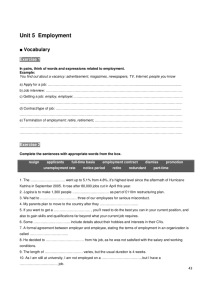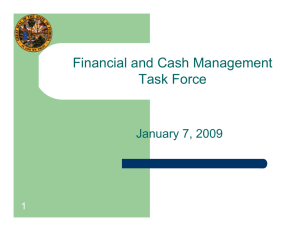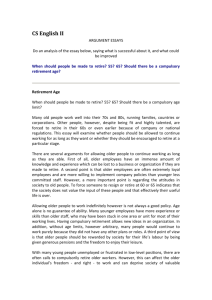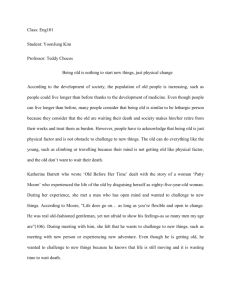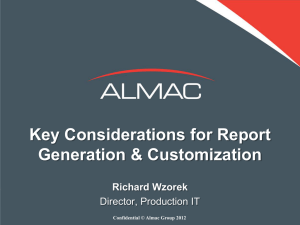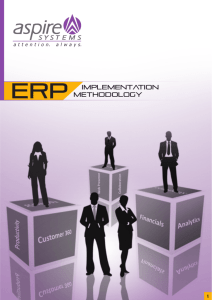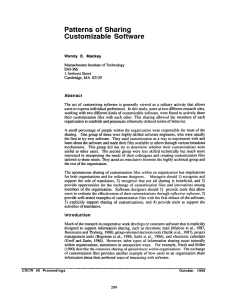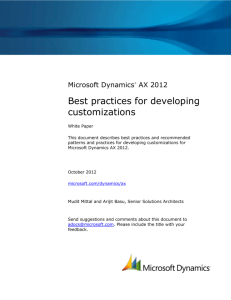Notes from the SWRC08 Discussion Session on
advertisement
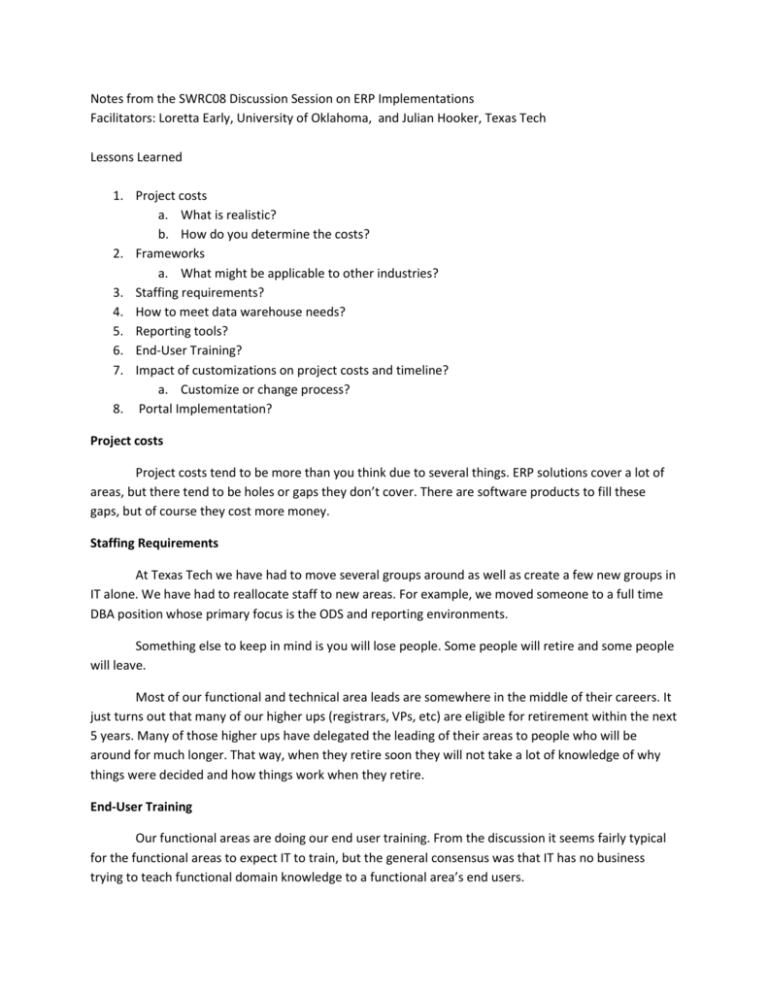
Notes from the SWRC08 Discussion Session on ERP Implementations Facilitators: Loretta Early, University of Oklahoma, and Julian Hooker, Texas Tech Lessons Learned 1. Project costs a. What is realistic? b. How do you determine the costs? 2. Frameworks a. What might be applicable to other industries? 3. Staffing requirements? 4. How to meet data warehouse needs? 5. Reporting tools? 6. End-User Training? 7. Impact of customizations on project costs and timeline? a. Customize or change process? 8. Portal Implementation? Project costs Project costs tend to be more than you think due to several things. ERP solutions cover a lot of areas, but there tend to be holes or gaps they don’t cover. There are software products to fill these gaps, but of course they cost more money. Staffing Requirements At Texas Tech we have had to move several groups around as well as create a few new groups in IT alone. We have had to reallocate staff to new areas. For example, we moved someone to a full time DBA position whose primary focus is the ODS and reporting environments. Something else to keep in mind is you will lose people. Some people will retire and some people will leave. Most of our functional and technical area leads are somewhere in the middle of their careers. It just turns out that many of our higher ups (registrars, VPs, etc) are eligible for retirement within the next 5 years. Many of those higher ups have delegated the leading of their areas to people who will be around for much longer. That way, when they retire soon they will not take a lot of knowledge of why things were decided and how things work when they retire. End-User Training Our functional areas are doing our end user training. From the discussion it seems fairly typical for the functional areas to expect IT to train, but the general consensus was that IT has no business trying to teach functional domain knowledge to a functional area’s end users. Impact of customizations on project costs and timeline One thing to note for budgets: Customizations may cost both up front and ongoing. Plan additional money in your reoccurring yearly budget for any customizations you make.
